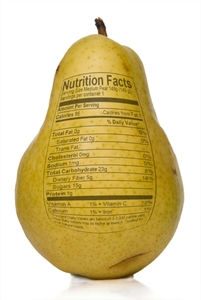Nutritional Labeling Helps Inform the Restaurant and Food Service Industry
This entry was posted on January 02, 2015 .
 Restaurant Labels Provide Clarity in the Kitchen
Restaurant Labels Provide Clarity in the Kitchen
People are becoming more health-conscious, and food service industries will be in a better position to serve these individuals by utilizing restaurant labels. A survey conducted by the International Food Information Council found that 71 percent of consumers believe healthfulness is a major factor in which food items and beverages they decide to purchase.
"While people's attitudes about healthfulness in their food and beverage purchases and consumption alone don't necessarily mean we are a healthier country today than we were a year or two ago, it could signal that we are moving in the right direction," said Marianne Smith Edge, senior vice president for nutrition and food safety at the International Food Information Council Foundation.
The study notes a shift in how people buy their groceries, but it may also illustrate a change in how people choose which menu items they want at restaurants, or even if they want to dine at a specific eatery. With people looking at what they eat more closely, it is up to those in the food service industry to be more cognizant of what is going into their dishes and how nutritious they are. This information needs to be noted in menus, as they influence whether people want to patronize establishments.
Business Stickers on Containers Bolster Organization
Restaurants can attach business stickers to bags and other storage containers to help keep track of nutritional labeling. In the most basic sense, they can be used to simply label products being stored in containers that may be difficult to identify.
Merchants could also use labels to make note of specific nutritional values. For instance, labels could be placed on milk cartons to differentiate skim milk from whole milk or used to help remind cooks of the nutritional values of various ingredients - for example, how much fat does a light sour cream have compared to a regular variant? This allows cooks to work quickly as they prepare dishes - they can make substitutions on the fly to reduce fat content or calories and create menu items that are more nutritious for health-conscious customers.
Specificity is key, especially considering some restaurants must convey specific information about nutritional values. For example, there are calorie count laws in New York and California that require businesses to display how many calories each dish has on the menu. Containers with nutrition labels help restaurants avoid fines and stay true to those numbers.
Another area in which labels are important are for noting the different types of ingredients. Some restaurants may offer menu items that are all organic - these ingredients need to be separated off and used only in organic dishes. Again, labels are perfect for helping cooks tell the difference.
Custom Stickers Help Retailers Deliver What they Promise to Customers
If restaurants want to keep tabs on nutrition values, custom stickers and labels are the way to go. This ensures there are no mistakes in the kitchen that result in customers getting something other than what they wanted.
Request your FREE instant quote today.

 Restaurant Labels Provide Clarity in the Kitchen
Restaurant Labels Provide Clarity in the Kitchen Custom Labels
Custom Labels  Custom Beverage Labels
Custom Beverage Labels  Custom Lip Balm Labels
Custom Lip Balm Labels  Custom Warning & Safety Labels
Custom Warning & Safety Labels  Perfume Bottle Labels
Perfume Bottle Labels  Bumper Stickers
Bumper Stickers  Custom Prop 65 Warning Labels
Custom Prop 65 Warning Labels  Custom Stickers
Custom Stickers